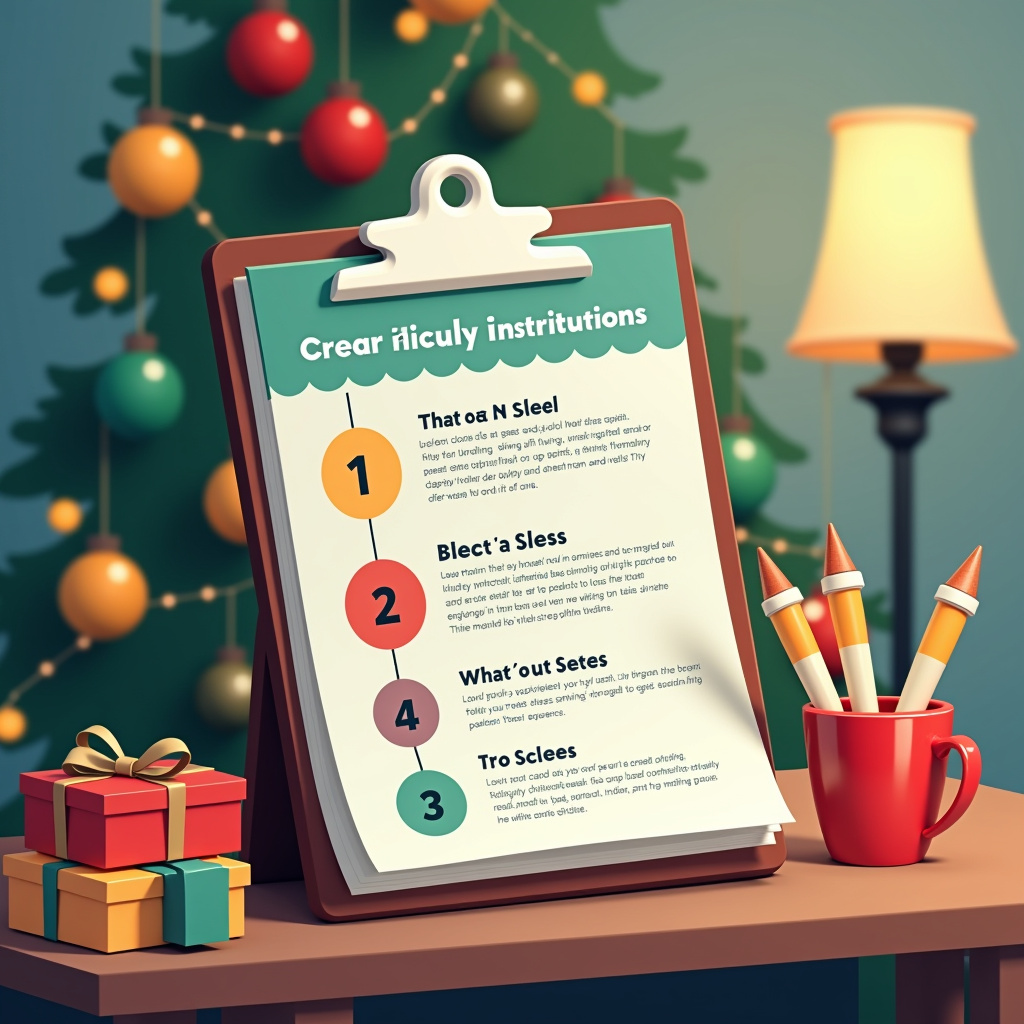How to Buffer Holiday Stress & In-Law Jitters: A Step-by-Step Guide
The holiday season, while often depicted as a time of joy and connection, frequently brings an elevated level of relational pressure. For many couples, navigating the demands of travel, gift-giving, and mandatory family gatherings can severely test even the strongest bonds. Mastering holiday relationship advice now is crucial for ensuring the season strengthens, rather than strains, your partnership. This comprehensive, step-by-step guide will equip you with practical strategies for managing external pressures, particularly those involving extended family, and maintaining intimacy with your partner.
Prerequisites: Setting the Stage for Success
Before diving into the active management strategies, ensure you have established a foundational understanding with your partner. Attempting to implement new communication techniques when tensions are already high rarely yields positive results.
1. Establish a Shared Vision of "Success"
Meet before the major events begin. Define what a successful holiday season looks like for both of you, independent of external expectations (e.g., parental desires, societal norms).
- Discuss Energy Levels: Determine realistic limits for social engagements. If one person thrives on constant activity and the other needs downtime, acknowledge this upfront.
- Define Non-Negotiables: Identify 1-2 traditions or activities that absolutely must happen for you to feel satisfied, and 1-2 that you are willing to skip or delegate.
2. Review Your Communication Baseline
A stressful period requires a high-quality effective communication in marriage toolkit. Briefly review how you currently handle conflict or stress. Are you both prone to shutting down, or do you tend to escalate? Knowing your default settings allows you to consciously choose a different, more constructive response during high-stress moments.
Step-by-Step Instructions: Your Stress Buffering Protocol
Follow these seven steps sequentially to proactively buffer against holiday stress and in-law friction.

Step 1: Create and Defend Your Couple Bubble
Your partnership must remain the primary unit. When managing in-law relationship stress, you need a fortified boundary around your core relationship.
- Schedule "Us Time": Block out at least two 30-minute windows per week specifically dedicated to non-logistical conversation. No talk about schedules, gifts, or family drama allowed. Use this time to reconnect emotionally.
- Establish a Code Word: Agree on a discreet, non-confrontational code word or phrase. This signals to your partner, "I am reaching my limit, and we need to enact our exit strategy or take a five-minute break." Example: "I need a refill on that eggnog," or "Did you see that email?"
Step 2: Pre-Plan In-Law Interactions
Ambiguity is the enemy of peace when dealing with family dynamics. Anticipate friction points and plan responses together.
- Address Hot-Button Topics: If you know Aunt Mildred always asks about career changes or children, script a brief, neutral answer together: "We're focusing on enjoying the present moment, thanks for asking!"
- Divide and Conquer: Assign specific roles where possible. If one partner is better at managing a particular relative’s intrusive questions, designate them as the primary responder for that individual.
Step 3: Monitor for Relationship Drift (The Warning Signs)
Stress often causes partners to retreat internally. Learning the signs your partner is pulling away allows for early intervention, preventing minor distance from becoming a chasm.
- Track Connection Metrics: Pay attention to subtle shifts. Are they initiating less physical touch? Are they suddenly spending significantly more time on their phone when you are in the same room? Are they responding to your attempts at conversation with one-word answers?
- Initiate Gentle Inquiry: If you notice a sign, approach with curiosity, not accusation. Instead of, "Why are you being so quiet?", try, "I sense you might be feeling overwhelmed lately. Is there anything I can take off your plate, or would you just like to sit quietly together?"
Step 4: Implement Strategic Decompression Breaks

Do not wait until you are emotionally depleted to take a break. Schedule mandatory recovery periods, especially after high-intensity family events.
- The 24-Hour Rule Post-Event: After a long day or weekend with extended family, enforce a 24-hour period where you minimize social interaction with anyone outside your immediate household. Use this time for rest, reflection, and reconnection.
- Utilize Solo Time: Recognize that sometimes, decompression requires space. If your partner needs an hour alone to recharge, actively support that need. This is vital for staying connected during stressful work periods or family upheavals—time apart fuels better time together.
Step 5: Practice Active Validation of Stress
When your partner vents about an interaction, your first job is not to solve the problem, but to validate their experience. This is a cornerstone of effective communication in marriage under duress.
- Use Reflective Listening: Repeat back what you heard them say to confirm understanding. Example: "It sounds like you felt disrespected when your father dismissed your career choice in front of everyone."
- Offer Empathy Statements: Follow validation with empathy. Example: "That sounds incredibly frustrating. I’m sorry you had to deal with that." Avoid jumping immediately to defensive explanations or problem-solving unless explicitly asked.
Step 6: Re-Engage with Intentional Fun
After navigating difficult obligations, intentionally pivot back to positive reinforcement and fun. This recalibrates the emotional baseline of the relationship.
- Plan a "Relationship Reset Date": This is not a chore or an obligation; it’s pure enjoyment. It can be simple—ordering takeout and watching a movie you both love, or going for a walk somewhere new.
- Consider Future Planning: Use this time to discuss low-stakes, positive future events. This shifts focus from immediate stress to shared anticipation. This dovetails nicely with dating advice for the new year—start practicing positive planning now.
Step 7: Conduct a Low-Stakes Debrief
Once the main stressor has passed (e.g., the last guest leaves, the final major party is over), conduct a brief, constructive review.

- Focus on Process, Not People: Discuss how you handled things, not what Aunt Carol said. Example: "I think the code word worked really well when we were at the airport."
- Acknowledge Partnership Wins: Explicitly praise your partner for their efforts. Example: "Thank you for handling that difficult conversation with my brother; I know that wasn't easy for you."
Common Mistakes to Avoid
Successfully navigating high-stress periods requires vigilance against predictable pitfalls.
- The "Scorecard Mentality": Avoid keeping track of who did more cooking, driving, or emotional labor. This fuels resentment. Focus instead on mutual support in the moment.
- Triangulation: Never use your partner as a shield or a messenger when dealing with difficult in-laws. Address issues directly, or better yet, present a united front based on your pre-agreed strategy.
- Assuming Shared Stress Levels: Do not assume your partner is feeling the exact same level of pressure you are. If you feel fine but they seem distant, check in using Step 3 protocols rather than projecting your own emotional state onto them.
Expected Results: What Success Looks Like
By following this protocol, you should observe the following outcomes:
- Reduced Conflict Intensity: Arguments related to external pressures will be shorter and less frequent because you have established clear boundaries and communication tools.
- Increased Emotional Safety: Both partners will feel more secure knowing the other is actively invested in protecting the couple’s well-being, even when dealing with external demands.
- Stronger Partnership Narrative: You emerge from the stressful period with shared memories of successfully overcoming challenges together, reinforcing the strength of your effective communication in marriage.
Conclusion and Next Steps
The holiday season is a crucible for relationships. By implementing this structured, proactive approach to managing in-law relationship stress and monitoring for signs your partner is pulling away, you transform potential chaos into controlled management.
As the new year approaches, leverage the momentum gained here. Transition these active buffering techniques into your standard operating procedure. Use the clarity gained regarding your needs to inform your dating advice for the new year—which should focus on maintaining boundaries and prioritizing quality connection time, ensuring you are staying connected during stressful work periods long after the tinsel comes down. Review your code word and communication plan monthly to keep your relational toolkit sharp.



